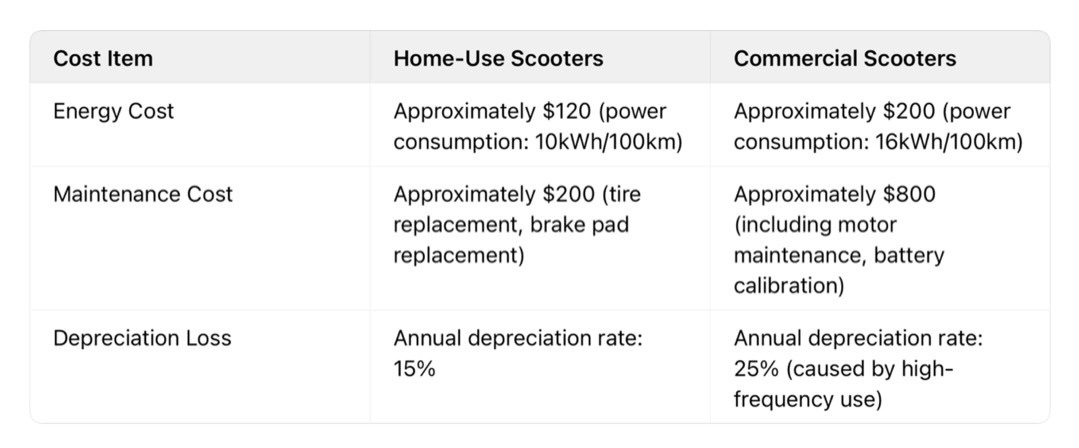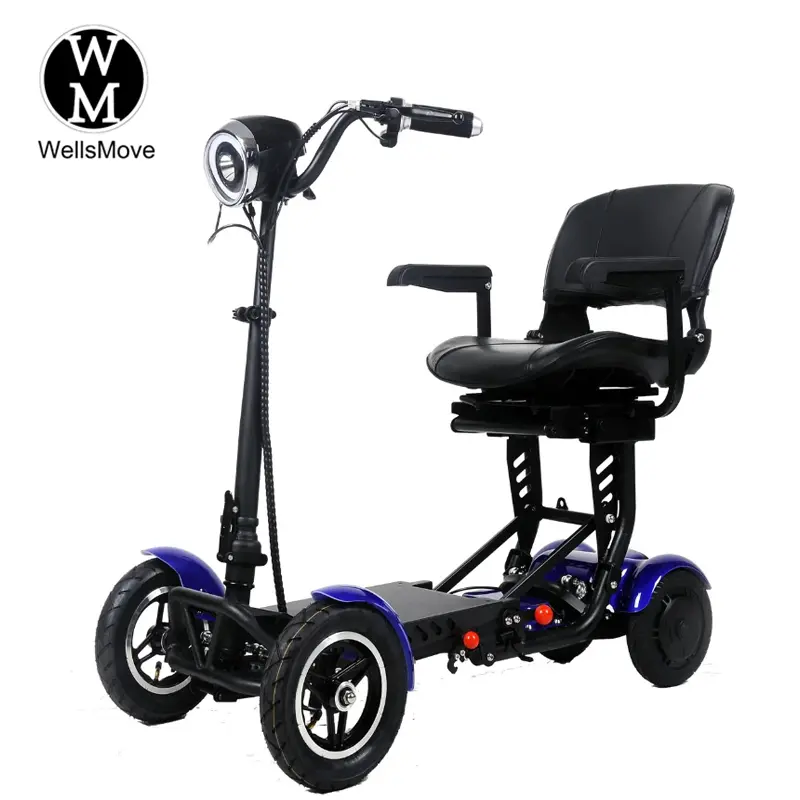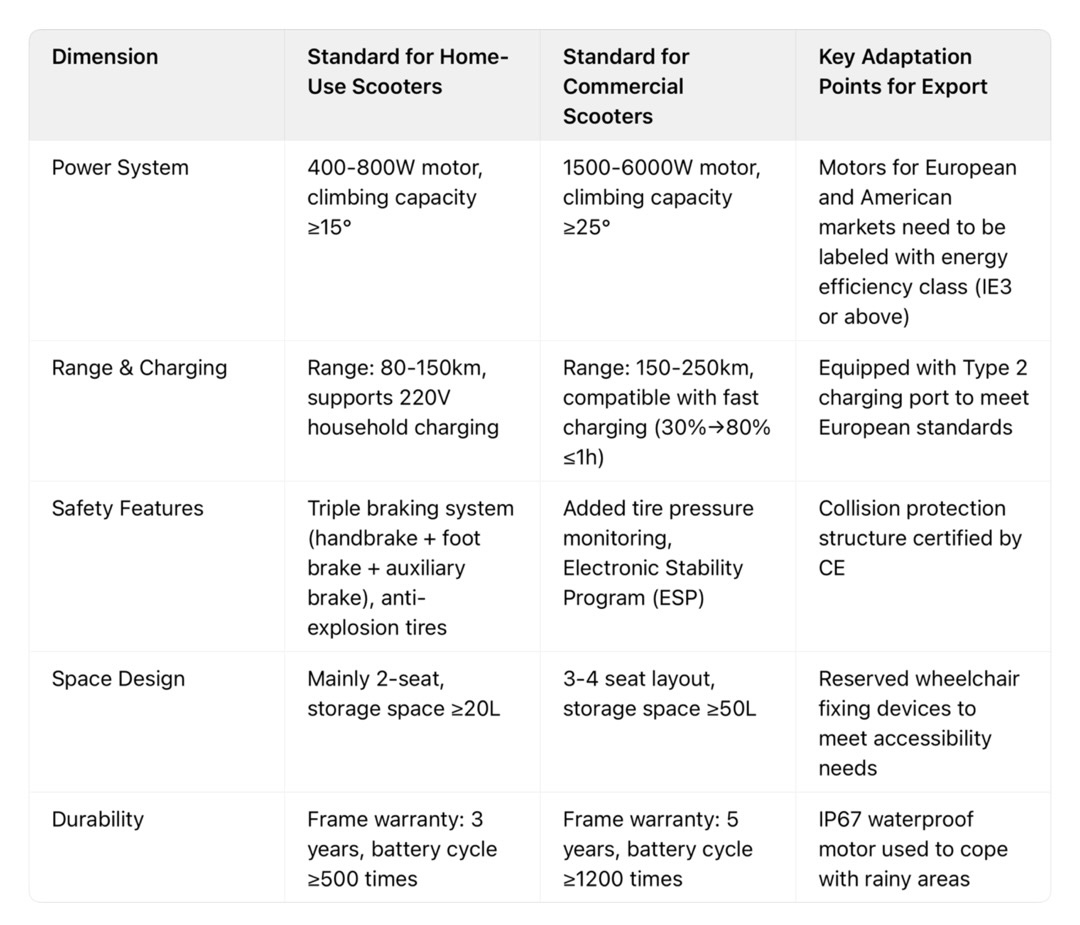Differences in Purchasing a Family and Commercial Mobility Vehicle
I. Targeting: The Core Differences Between the Two Vehicle Types
1. Family Mobility Vehicle for Seniors: Perfectly Adaptable to Personal Needs
The core use case for family mobility vehicles is short trips for one or two people, such as shopping in the neighborhood, strolling in the park, and going to and from the doctor. The average daily mileage is typically ≤20 km. Its design logic is centered around the physiological characteristics of the elderly:
Operational barrier: The control interface needs to be simplified, such as the “one-touch start + voice reverse prompt” feature on the minibus Yuzhou, to reduce learning costs.
Space requirements: Flexibility is prioritized over capacity, with a common two-seat layout and a vehicle width ≤1.2m to accommodate narrow alleyways.
Comfort priority: Equipped with high-resilience memory foam seats (such as the Bidwin Lingdi) and a multi-shock system to enhance comfort for extended sitting.
2. Commercial mobility scooters for seniors: Meeting high-frequency operational needs.
Commercial models serve public use, including transportation to nursing homes, community services, and scenic spot shuttles. The average daily mileage can reach 80-120km, with durability and efficiency as their core requirements.
Dual passenger and cargo transport: Models like the Baizhi Big Bear offer 5 doors, 4 seats, and a 1500L expansion volume, accommodating both passenger and cargo transport.
High-intensity use: Utilizes a 6000W high-power motor (such as the Entu E9) and a 120Ah Large-capacity battery for continuous operation
Maintenance convenience: Designed with easily removable components, such as quickly replaceable battery packs, to reduce downtime
II. Key Parameter Comparison: From Basic Configuration to Advanced Features
III. Export Compliance: Certification and Standard Barriers for Different Scenarios
1. Family Vehicles: Focusing on Personal Safety Certification
Basic Threshold: EU requires compliance with the EN 12184 safety standard for mobility vehicles; US requires compliance with the FDA Class I medical device classification
Key Testing: Braking distance (≤4m/10km/h), electromagnetic radiation (to avoid interference with pacemakers), and blind spot testing
Labeling Requirements: Labeling with warnings such as “Private Use Only” and “Maximum Load 150kg”
2. Commercial Vehicles: Additional Operational Compliance Requirements
Additional Certifications: EU requires ISO 9001 production quality system certification; US requires DOT FMVSS 500 vehicle safety report
Data Traceability: Equipped with a mileage recorder (such as the Thunder King N100) (with driving data storage function) to meet commercial vehicle regulations.
Environmental requirements: Batteries must comply with UN 38.3 transport standards and have a 100% recyclable labeling rate.
IV. Lifecycle Cost: Investment Logic for Home vs. Commercial Use
1. Procurement Cost
Home Use: Mainstream price range: $2,000-5,000 USD. Core costs are battery (40%) and comfort features.
Commercial Use: Price range: $5,000-12,000 USD. The premium mainly comes from the high-strength chassis (30% increase in cost) and fast charging system.
2. Operating Cost (based on an average annual mileage of 10,000 km)

V. Purchasing Decision Tree: 3-Step Selection of Suitable Vehicles
Scenario Definition:
Private Use + Daily Average ≤30 km → Home Use Vehicle (Recommended: Minibus Yuzhou, Yujie Punk Meimei)
Institutional Operation + Daily Average ≥80 km → Commercial Use Vehicle (Recommended: Baizhi Daxiong, Entu E9)
Compliance Matching:
Exporting to Europe: Prefer vehicles that pass CE+REACH Certified Vehicles
Exporting to North America: Confirm compliance with FDA+DOT dual standards
Cost Calculation:
For commercial vehicles, calculate “average daily operating cost = (purchase price / expected lifespan) + average daily energy consumption + maintenance reserve” to ensure it’s at least 30% lower than a fuel-powered shuttle.
VI. Export Case Studies
For European families: Choose the Bydwin Leading (150km range + 8-year battery warranty), featuring the “low-temperature range degradation ≤10%” designation for Nordic climates.
For Japanese communities: Purchase the Thunder King N100 (fully enclosed design + 250km range), equipped with a Japanese voice prompt system, and JIS certification.
Post time: Oct-27-2025




